Mut 2008 — The Arrival
We flew to Luxor on New Year’s Day, and were able to start work on January 3. We haven’t done much yet but get re–acquainted with the site and meet the people we’ll be working with this year. The real work will start on Saturday, January 5.
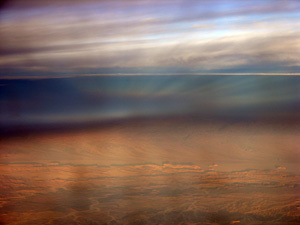
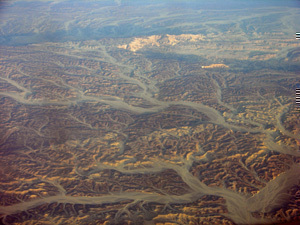
The desert view on the Cairo–Luxor flight can be dramatic, particularly in the late afternoon. Depending on which side of the plane you’re on, you see either the Nile and green fields or desert stretching to the horizon. Despite the streaks from a dirty window, I thought you would enjoy the intense light and the rivers of sand.

The entrance to the Mut Precinct, which is closed to visitors. Even we can’t get in until the arrival of the inspector from the Supreme Council of Antiquities (SCA) with whom we’ll work this season. We can hardly wait to see how things look and especially how high the grass has grown.

Well, this is a relief. Very little vegetation has grown up over the area north of the Mut Temple’s 1st pylon, one of the areas we’ll be working in this year.
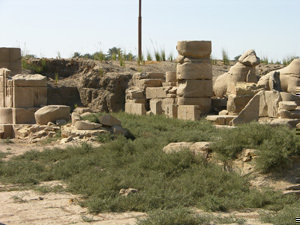
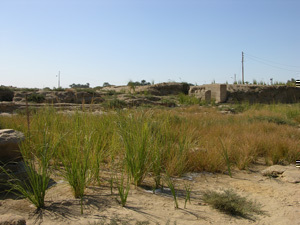
In fact, the grass isn’t too bad anywhere on the site, even though it looks rather thick in the forecourt of Temple A (right). What is taking over the precinct is prickly camel thorn, called shoka (fork) in Arabic. Because its roots are shallow, removing camel thorn is easier — although more painful — than removing the grass.

Richard discusses the season’s work with our inspector, Osama Abdel Maougoud Abdalla and our SCA conservator, Khaled Mohamed Wassel, who has worked with us for the past two seasons. We’re happy to see them both and look forward to a good season again this year.

Shade is hard to find in the Mut Precinct, so the arrival of the kiosk we built last year is a welcome sight. It’s been stored off–site since we’ve been gone and we’re glad to see it back.

One of the most interesting things about the Mut Precinct is the variety of bird life, particularly water fowl who nest in the sacred lake. A favorite is the bright green bee eater (or bee catcher) who catches insects mid–flight. We usually see them perched on wires, but this one decided to pose on a Sakhmet statue for me.
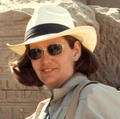
Mary McKercher holds a BA in Ancient Near Eastern Studies (specializing in Egypt) from the University of Toronto and is also a trained archaeologist. In 1979 she joined the Brooklyn Museum’s expedition to the Precinct of the Goddess Mut at South Karnak as photographer and archaeologist, roles she continues to fill. She has contributed to the Mut Expedition’s “Dig Diary” since it began in 2005, and put together the photographs for the 8 Mut Expedition photo sets on the museum’s Flickr site. With her husband, Richard Fazzini, she has also researched and written about the West’s ongoing fascination with ancient Egypt, commonly known as Egyptomania.
